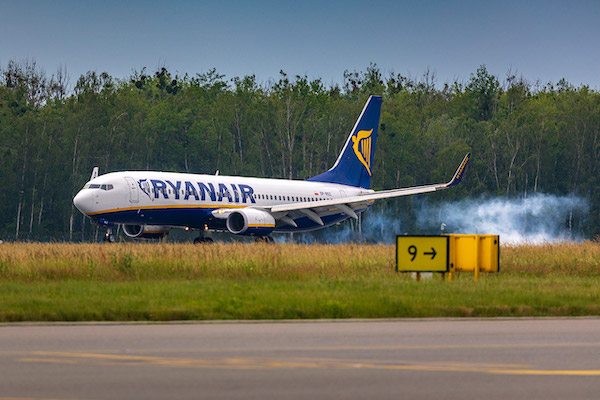Ryanair has reported an 18% decline in profits amid challenging conditions, attributing these issues largely to Boeing delivery delays. The no-frills airline’s net profit dropped to €1.79 billion, despite a substantial increase in passenger traffic. The reduction in average fares across the quarters due to economic constraints was a contributing factor.
In a noteworthy disclosure, Ryanair’s CEO highlighted that passenger traffic grew significantly, with ancillary revenues showing resilience. However, delays in aircraft delivery have posed considerable challenges. Amidst these developments, Ryanair continues to adapt its strategies to address capacity and economic concerns, with a focus on optimizing its operational framework.
Financial Performance and Traffic Growth
Ryanair, a leading European airline, reported an 18% decrease in half-year profits, ending at €1.79 billion. This drop is observed despite a 9% rise in passenger traffic, reaching 115 million passengers. Challenges during this period included a 7% drop in airfares in the summer quarter, reflecting a broader consumer spending squeeze and decreased bookings from online travel agents.
According to the airline’s CEO, Michael O’Leary, Ryanair has seen a shift in customer behaviour towards their lower fares, contributing to record share gains in many markets. The traffic growth was noted at 9%, while ancillary revenues increased by 10%, totalling €2.74 billion, evidencing strong demand amidst operational hurdles.
Impact of Boeing Delivery Delays
The ongoing delays in Boeing aircraft deliveries have significantly impacted Ryanair’s operations. Boeing’s strike has resulted in delivery slips of nine new 737 aircraft into the upcoming financial quarter.
Ryanair had 172 new-generation Boeing aircraft by late October, but the envisioned growth target was revised to mitigate the impacts of these delays.
Operational Adjustments and Strategies
With the projected impact of the Boeing delays, Ryanair has adjusted its growth target for the next year, reducing it from 215 million to 210 million passengers. This is a preventative measure to avoid potential overcapacity and additional costs that plagued the previous summer.
Despite these challenges, over 90% of Ryanair’s capacity for the next summer is in place, showcasing the carrier’s focus on strategic planning and route optimisation. The airline aims to continue reallocating capacities to regions providing favourable tax and growth conditions.
Challenges with Air Traffic Control
Ryanair has faced repeated air traffic control (ATC) delays caused by staffing shortages and equipment failures, which O’Leary describes as a summer of record ATC issues.
The airline advocates for improved staffing and operational measures to enhance punctuality and environmental efficiency, focusing especially on critical morning departures.
Economic Pressures and Market Responses
Average fares fell by 10% due to increased price stimulation to combat falling bookings, influenced by a squeeze on consumer spending.
Despite this, Ryanair has capitalised on growing demand for budget-friendly travel options, maintaining robust traffic levels and continually adjusting its market strategies accordingly.
Regional Capacity Reallocations
Ryanair intends to shift capacity towards regions like Sweden, Hungary, and certain Italian regions where aviation taxes are being reduced or eliminated as part of regional growth strategies.
The airline plans these reallocations while criticising the UK’s rise in Air Passenger Duty, which contributes to reduced capacity at UK airports by up to 10% in the coming year.
Forward Projections and Bookings
Wizz Air, a competitor, saw a 4.1% rise in October passenger numbers year-over-year, with a 3.7% increase in seat capacity, despite challenges such as engine-related groundings.
Ryanair remains committed to achieving between 198 million and 200 million passengers for the current financial year, contingent on stable operational conditions.
Ryanair navigates significant challenges, such as Boeing delivery delays and economic pressures, with strategic adjustments.
The airline’s resilience is evident in its adaptive strategies and robust market engagement, which continue to support strong passenger traffic.

